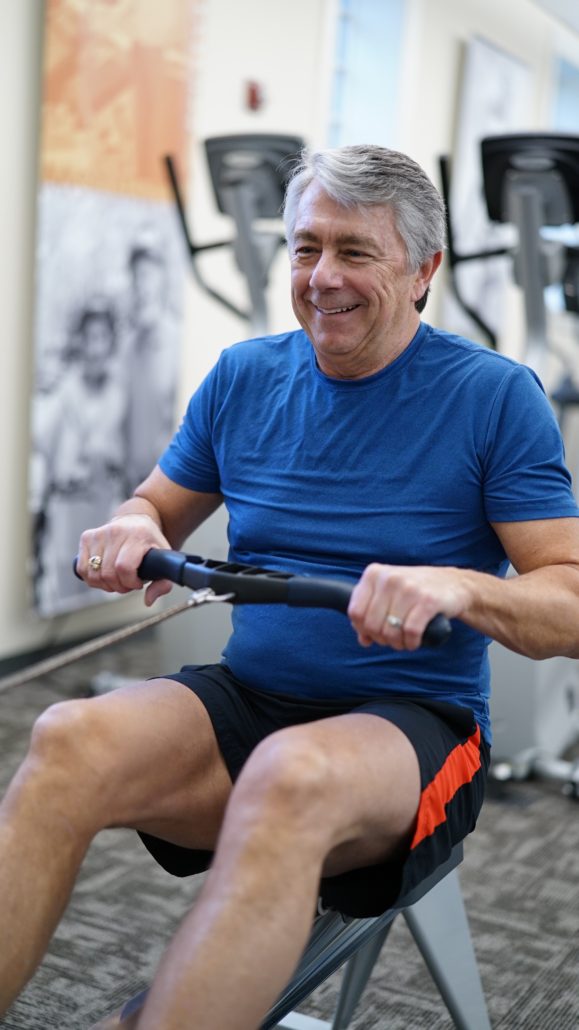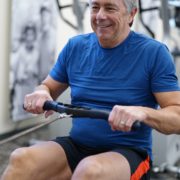You Are Too Old Not to Exercise!

Photo by Catherine Heath on Unsplash
Late afternoons on Monday, Wednesday and Saturday are three of my least favorite times of the week. That’s when you will find me at my local 24-Hour Fitness. I rarely break that routine.
It’s the most boring, painful time of my week. I hate it, until I’m done and back home rewarding myself with a cold Wialua Wheat beer with Passion Fruit. (I know what you beer snobs are saying – just get over it – I’m 77 and “entitled” to have weird beer tastes).
With mega-missing cartilage in both knees from 17 years of pickup basketball, I’m relegated to not having both feet off the ground at the same time. So my aerobic is no running, no basketball, nothing that pounds the knees. So I’m restricted to an elliptical, a treadmill or an upright bike.
BORRRING!!!!!!
I relate to what Jack LaLanne, the late fitness, exercise, and nutrition expert is reported to have said when asked why he enjoys exercise so much. His response: “I don’t like exercise. I just like the results.”
I get that. The two other guys in my age range that I see repeatedly at 24 apparently get it also, I guess. I’m sure they are hating it also. Why else would they be there looking so out of place as we do?
The mirror-muscle crowd with their tattoos, tank tops, and tiny testicles don’t seem to be bored with it. But then, I’m thinking they have a different motivation, as in attracting the Lululemon-clad “hard bodies” that seem to align their workout schedules with the mirror-muscle clan.
I also wonder if they have a life. And what’s really in those big water jugs they haul around? I don’t inquire. We don’t get in each other’s way since we are working opposite ends of the weight racks.
Six by forty-five
I’ve held to a six-day-a-week, forty-five-minutes-a-day aerobic exercise routine since 2013 when I first read “Younger Next Year”, one of the most transformational books ever (Bill Gates and thousands of others say so also!). Following the book’s recommendations, I add 45-minutes of strength training to three of those days – the aforementioned least favorite.
Tuesday, Thursday, Friday are “off days.” Still boring – just a shorter bore.
The physician co-author of the book, the late Dr. Henry Lodge, made a statement that has stuck with me and motivates this exercise regimen. He said:
“Aerobic exercise will give you life; strength-training will make it worth living.”
Let’s get “counter-cultural”
A few decades ago, exercise physiologists assumed that older people cannot build muscle mass or strength after age fifty-five. That is cultural programming at its worst. We now know it’s wrong. But it still lingers as just one component of general negative programming that triggers physical changes in the body leading to reduced health and vigor.
We are subtly taught to expect to be socially useless after a certain age. We buy in and ignore what we now know can retard, even reverse, the so-called inevitable declines of aging. We’ve known for a long time that lack of physical activity, along with poor nutrition, smoking, and excess libation are responsible for much of the late-life suffering caused by chronic illness.
All are preventable choices.
Be like Fred
If you’ve hung with me for a while, you’ll recall my three-part series entitled “Aging Without Fraily – A Series”. I talk a lot about a phenomenon in my Colorado backyard by the name of Fred Bartlit. Fred is an 87-year old practicing attorney, West Point grad, former Army Ranger, back-bowl skier, a golfer who shoots his age and is a gonzo strength-trainer.
He co-authored a book “Choosing the Strong Path; Reversing the Downward Spiral of Aging” in which he is not shy about taking our healthcare industry to task for not raising the awareness about the ills of inactivity – especially strength-training – and its role in early and long-term frailty.
Fred pushes more weight around in a day than any five randomly-selected people in my neighborhood would push around in a week. And he looks it (check him out at www.strongpath.com).
I had a brief phone conversation recently with Fred, trying to persuade him to volunteer to let me interview him for an article or podcast. No luck – but I did get an earful about how the day before he had made 23 runs at Vail, including five from top to bottom. He not-so-subtly reminded me that “nobody does 23 runs in a day at Vail.” He’s right – I’d guess a good day at Vail for most would be 12-15 runs. (If you are sensing a bit of arrogance in Fred, you would be spot on – but I’m thinking maybe he’s earned the right.)
Fred, and the thin slice of our older population like him, demonstrate what we third-agers must come to understand. Exercise, especially strength-training, are not domains for just the young. When we are younger, it’s an option. When we cross the 50-year line, it is imperative.
At that point, you are too old not to exercise.
Not an exerciser? Take these three simple steps to start.

- Get a wellness check/physical and get your doctor’s green light to start a program. Just be aware that your doc probably doesn’t exercise and isn’t likely to be an expert. He/she is still too busy trying to figure out how the electronic medical record on the computer works. You’re not looking for personal trainer-type advice from him/her. You just want to know that you don’t have something that will go haywire if you walk to the end of the block and back while arm-curling 2-lbs weights.
- Walk to the end of the block and back arm-curling 2-lb weights. Start slow and commit to a routine. Scrap that – make it a ritual. Routines are OK but until you make it a ritual it won’t stick for the long term. (Reference my 6 x 45 above – that is a ritual for me – you don’t want to be in my vicinity if I break that ritual.)
- Start kedging and count telephone poles. Whaaa? Kedging is an old mariner technique whereby the captain of a sailing ship that was “in irons”
 (that’s no wind for you non-mariners) would keep his ship moving and his crew busy by having them row a small boat out a few hundred yards with a rope attached to the main ship, drop anchor and pull the ship to them. When you start out with a walking/jogging exercise routine, walk/jog to a close-in telephone pole and back (or similarly repeating marker like the end of a block) the first day and then the next exercise day walk/jog to the next furthest telephone pole/block and back. Keep extending it and before you know it you have exceeded your best expectations for this life-altering activity. And you will:
(that’s no wind for you non-mariners) would keep his ship moving and his crew busy by having them row a small boat out a few hundred yards with a rope attached to the main ship, drop anchor and pull the ship to them. When you start out with a walking/jogging exercise routine, walk/jog to a close-in telephone pole and back (or similarly repeating marker like the end of a block) the first day and then the next exercise day walk/jog to the next furthest telephone pole/block and back. Keep extending it and before you know it you have exceeded your best expectations for this life-altering activity. And you will:
- Lose weight
- Regain stamina
- Gain flexibility
- Have a better appetite (no sugar, salt, fat please)
- Sleep better
- Like yourself better
- Make your sedentary, grumpy neighbor jealous and perhaps motivate him/her to action.
- Help reduce our out-of-control healthcare expense.
- Wonder why you’ve been so naïve up to this point.
- Forget the number for your favorite TV channels.
- Open space in your home where the Lazyboy used to be.
This really is simple but vital stuff. There is no better antidote to extended morbidity, frailty and a shortened life than exercise. Yet our cultural programming has convinced us it’s the young person’s domain.
I’ll wrap with two specific points of knowledge that we, as third-agers, should understand:
- Sarcopenia is a condition that we all experience starting in our thirties. It’s the loss of muscle mass and strength. It starts subtly and really accelerates in our fifties. There is no drug or surgery for it. The only antidote is resistance training.

- There is a protein called brain-derived-neurotrophic-factor (BDNF) that is a key player in generating new neural connections in our brain. The only source of BDNF? You guessed it – exercise!
We can be pretty creative in coming up with reasons and excuses for not exercising. I submit that few are legit.
It’s not an option – it’s imperative. Because you are too old to not do it.
Do you have an exercise breakthrough story that you can share with us? Email me at gary@makeagingwork.com or leave it as a comment below.
Also, if you haven’t, subscribe to our weekly newsletter at www.makeagingwork.com and receive a copy of my free ebook entitled “Achieve Your Full-Life Potential: Five Easy Steps to Living Longer, Healthier, and With More Purpose.”
.





I think it is important to mention that exercise does not always need to be at a gym – any physical activity that keeps people moving is helpful. The majority of the Blue Zone people did farming or walking and that works well also.
You are my breathing in, I own few web logs and sometimes run out from to post .
To the makeagingwork.com admin, Your posts are always well-referenced and credible.
To the makeagingwork.com webmaster, Your posts are always well received by the community.
Hello makeagingwork.com administrator, You always provide clear explanations and step-by-step instructions.
Hi makeagingwork.com webmaster, Your posts are always well-written and easy to understand.
Thanks for this fantastic post, I am glad I noticed this web site on yahoo.
Dear makeagingwork.com admin, Your posts are always a great source of knowledge.
To the makeagingwork.com owner, You always provide clear explanations and definitions.
Hi makeagingwork.com owner, Excellent work!
Dear makeagingwork.com owner, You always provide useful links and resources.
To the makeagingwork.com admin, Well done!
To the makeagingwork.com webmaster, Thanks for the well-organized and comprehensive post!
Hi makeagingwork.com admin, Thanks for the detailed post!
Hello makeagingwork.com owner, Your posts are always well-supported by facts and figures.
To the makeagingwork.com owner, Your posts are always well-supported by facts and figures.
Dear makeagingwork.com admin, Thanks for the educational content!
Dear makeagingwork.com webmaster, Thanks for the well-researched post!